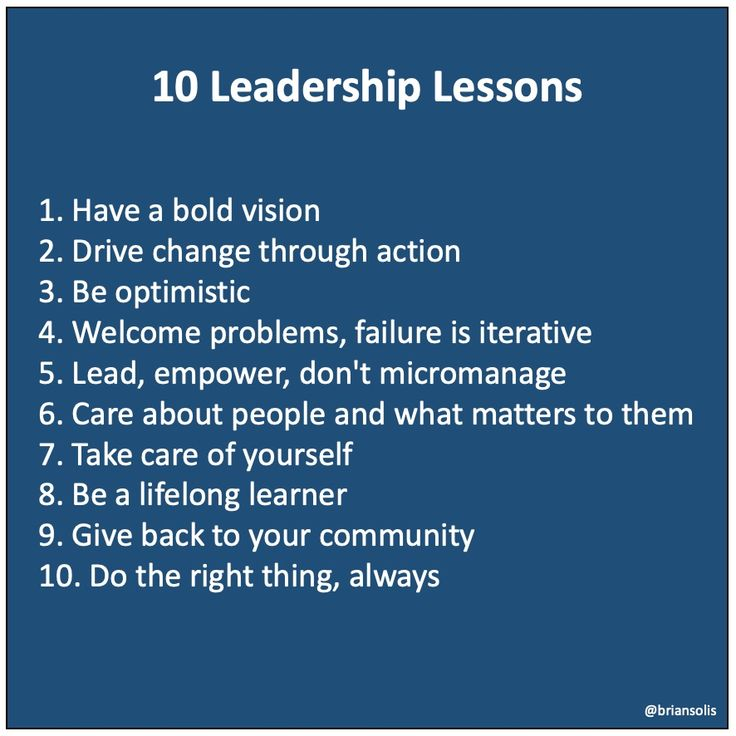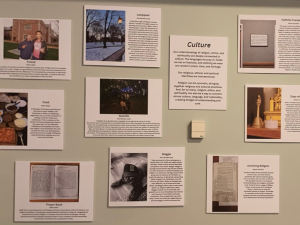Leadership lessons often emerge from unexpected sources, illuminating the path toward effective management and team cohesion. From the gripping narratives of popular shows to the intricate movements of dances like Argentine tango, we find a treasure trove of insights that highlight the importance of teamwork and understanding dynamics. Engaging in activities such as cycling not only cultivates leadership skills but also enhances our emotional well-being, enabling us to tackle the challenges of guiding others effectively. As you explore these unique contexts, consider how the effects of cycling and the rhythm of tango can inform your approach to leadership, offering new perspectives on collaboration and support within teams. Ultimately, integrating these lessons into our daily lives can significantly enrich our leadership journeys, fostering a culture of empathy and growth.
Exploring the realm of guidance and influence, we uncover invaluable insights for those at the helm of organizations. Not only do these leadership insights arise from conventional settings, but they also spring from unique experiences, like communal cycling sessions or immersive dance practices. Understanding the nuances of collaboration, as well as cultivating essential skills for effective direction, can lead to impactful team dynamics. Each scenario offers a fresh lens on how we can cultivate supportive environments and promote resilience among team members. Harnessing these concepts allows leaders to navigate their roles with greater ease and impact.
Discovering Leadership Lessons in Popular Media
Understanding leadership goes beyond traditional business settings; one can glean valuable insights from popular media, such as the series “Severance” on Apple TV+. This show offers a compelling exploration of identity within an organization, illustrating how different versions of oneself can emerge in varied contexts. The underlying themes challenge viewers to reflect on why organizations may impose certain identities on their employees. This concept not only highlights the importance of adaptability but also emphasizes the necessity of recognizing intrinsic motivations within a team, which are pivotal for effective leadership.
Taking cues from popular culture can significantly enhance one’s leadership skills. As seen in “Severance,” leaders must navigate complex interpersonal dynamics while fostering an environment of openness and trust within their teams. By recognizing the multifaceted nature of human identity in workplace settings, leaders can promote a culture that values diverse perspectives, ultimately leading to a healthier, more engaged workforce. Such narratives encourage leaders to embrace authenticity, which is vital for encouraging teamwork and collaboration in any organizational context.
The Therapeutic Effects of Cycling on Leadership
Cycling is not just a physical activity; it serves as a mental and emotional sanctuary for many. For those in leadership positions, like Uche Amaechi, cycling fosters clarity of thought and emotional regulation. In his experience, commuting by bike allows for quiet moments of introspection, providing a platform to process daily challenges. This is crucial for maintaining a healthy work-life balance, a fundamental aspect of effective leadership. Leaders who manage stress through activities like cycling can inspire their teams to prioritize self-care, ultimately enhancing performance and job satisfaction.
Furthermore, the benefits of cycling extend beyond personal health; they enhance leadership skills by encouraging mindfulness. Being present in the moment while riding allows leaders to become more attuned to their environments and the people within them. This heightened awareness is essential for understanding team dynamics and responding to the needs of team members. When leaders embody this reflective approach, they set the stage for creating a supportive work atmosphere where collaboration flourishes and individual contributions are recognized.
Embracing Teamwork through Argentine Tango
Engaging in Argentine tango exemplifies the importance of teamwork in leadership development. The dance requires a delicate balance of leading and following, demanding that participants be acutely aware of each other’s movements and intentions. This relationship mirrors the dynamics of a successful team where collaboration is key. A leader who understands the nuances of guiding others while being receptive to feedback demonstrates empathy and enhances teamwork, which is vital in achieving organizational goals.
In tango, just as in the workplace, leaders must adapt their strategies based on the immediate context and the responses of their partners. This dance of leadership fosters a culture of responsiveness and open communication, crucial elements for a thriving team environment. By drawing parallels between the dance floor and the office, leaders can appreciate the intricate interplay between individual roles while promoting a collective effort towards success. This understanding helps in grasping the importance of teamwork, ultimately benefiting the organization’s mission.
Work-Life Balance: A Leadership Imperative
Effective leadership hinges on maintaining a healthy work-life balance, an increasingly important principle in today’s work environments. Leaders who prioritize self-care are not only better equipped to make decisions but also model this behavior for their teams. This is especially relevant in contexts like commuting, where activities like cycling serve as both a physical and mental break. By embracing a balanced lifestyle, leaders can cultivate resilience and creativity, which are essential for innovative problem-solving.
Furthermore, promoting work-life balance within teams fosters a culture of trust and mutual respect. When leaders encourage open discussions about personal wellbeing, they create an atmosphere where employees feel valued beyond their job titles. This holistic approach contributes to a more harmonious workplace, where each member can thrive individually and collectively. Leaders must recognize the significance of integrating personal wellness into their leadership practices, advocating for initiatives that support the mental and emotional well-being of all team members.
The Power of Reflection in Leadership
Reflective practices are vital for any leader wishing to grow and adapt over time. The influence of both cycling and dance highlights the need for introspection in leadership. Just as a cyclist processes thoughts during their ride, a leader must take time to reflect on their actions and decisions. This intentional practice not only sharpens critical thinking skills but also enhances emotional intelligence, enabling leaders to connect more deeply with their teams.
Moreover, stepping back to observe the overall dynamics—akin to watching from the balcony in a tango dance—allows leaders to assess the health of their organization’s culture. Reflection enables leaders to identify areas of improvement, anticipate potential conflicts, and appreciate successes. By cultivating a reflective mindset, leaders are better positioned to encourage open dialogue, foster collaboration, and promote a team-oriented environment where every member feels empowered to contribute.
Navigating Organizational Dynamics through Effective Communication
Successful leadership is deeply rooted in the ability to navigate complex organizational dynamics through effective communication. In various settings, whether cycling through a bustling city or leading a team project, clear communication serves as the foundation for collaboration and understanding. Leaders who can articulate their vision while also listening to the insights of team members facilitate a more inclusive environment, which is paramount for achieving collective objectives.
Effective communication also involves recognizing non-verbal cues, much like interpreting movements in tango. Leaders must be observant and responsive, adapting their messages in real-time based on the needs of their teams. This skill not only fosters trust but also empowers employees to speak up and share their thoughts freely. By prioritizing adept communication strategies, leaders can forge stronger connections within their teams, enhancing both performance and morale in any organizational landscape.
Understanding the Effects of Movement on Team Cohesion
Incorporating movement—be it through cycling or dance—into team-building activities can significantly enhance cohesion and morale. Physical activities promote bonding among team members and spark creative thinking. Like the fluid movements in tango, where partners synchronize their actions, leaders can cultivate a similar sense of unity within their teams. When team members engage in shared experiences of movement, it encourages interaction and teamwork, reflecting the importance of collaboration in achieving common goals.
Moreover, the effects of physical activity extend to improving mental sharpness and reducing stress. Teams that integrate movement into their routines are likely to perform better under pressure and exhibit higher levels of engagement. Therefore, by recognizing the interplay between physical activity and team dynamics, leaders can create initiatives that foster not only individual well-being but also strengthen the collective performance of their teams.
Building Emotional Intelligence through Active Engagement
Emotional intelligence is critical for effective leadership, requiring an understanding of oneself and others. Engaging in activities such as Argentine tango can enhance emotional awareness by necessitating responsiveness to a partner’s cues. This engagement fosters a greater understanding of interpersonal dynamics, equipping leaders with the ability to manage their emotions and those of their team members effectively.
Active engagement in both professional and personal settings allows leaders to refine their emotional intelligence. By practicing empathy and responsiveness in activities like dance, they build essential skills that translate into the workplace. Leaders who nurture their emotional intelligence create a supportive environment, empowering their teams to thrive. Ultimately, the benefits of this practice resonate throughout the organization, as emotionally intelligent leaders foster strong, adaptive teams.
The Importance of Self-Understanding in Leadership
Self-understanding is a cornerstone of effective leadership. Leaders who are aware of their strengths, weaknesses, and values are better equipped to guide their teams through challenges. Activities such as cycling not only provide physical benefits but also serve as a platform for self-reflection. By taking time to analyze their thoughts and feelings, leaders gain valuable insights that shape their decision-making and leadership style.
Additionally, as leaders become more self-aware, they can better relate to their team members, fostering a culture of openness and trust. Understanding one’s motivations and responses enables leaders to approach challenges with confidence and clarity. This journey of self-discovery reinforces the leaders’ role in modeling transparency and authenticity, which are crucial for building strong, cooperative teams. Ultimately, the commitment to self-understanding enhances overall leadership effectiveness.
Frequently Asked Questions
What are key leadership lessons from cycling?
Cycling offers valuable leadership lessons by emphasizing the importance of work-life balance and providing a cathartic escape to process thoughts. As a leader, taking time for self-care through activities like cycling not only enhances personal well-being but also improves your effectiveness in guiding a team. The reflective nature of cycling allows leaders to clear their minds and return to their roles with renewed focus and perspective.
How can Argentine tango teach us about teamwork in leadership?
Argentine tango illustrates vital leadership lessons by showcasing the importance of teamwork and effective communication. In tango, leaders must read their partners’ cues and adjust their movements, symbolizing how leaders should be adaptive and responsive to their team’s needs. This dance highlights that strong leadership involves a balance between leading and following, fostering an environment where all team members contribute and collaborate effectively.
What leadership lessons can be learned from the importance of teamwork in Argentine tango?
In Argentine tango, the success of the dance hinges on teamwork, prioritizing mutual understanding and partnership. This emphasizes a leadership lesson: effective leaders recognize that collaboration and clear communication are essential for achieving collective goals. By embracing these aspects, leaders can cultivate a cohesive team environment, leading to enhanced performance and shared successes.
What insights about leadership can be drawn from watching the TV show ‘Severance’?
The TV show ‘Severance’ effectively explores themes of organizational leadership and identity. It raises critical questions about the importance of understanding dynamics within teams and organizations. By examining characters’ experiences with multiple identities in a corporate setting, viewers gain insight into the complexities of leadership, including the challenges of aligning a team’s mission with individual goals, thereby fostering more nuanced leadership skills.
What are the emotional and mental benefits of cycling as it relates to leadership?
Cycling not only offers physical benefits but also crucial mental and emotional advantages that enhance leadership. The mental clarity achieved while cycling allows leaders to process challenges and develop strategies in a serene environment. This activity serves as a stress reliever, enabling leaders to return to their roles energized and more focused, reinforcing the idea that self-care is vital for effective leadership.
| Key Points | Details |
|---|---|
| Leadership Lessons from TV Shows | The TV show ‘Severance’ explores themes of identity and control in organizations, prompting discussions about leadership dynamics and employee engagement. |
| Personal Well-being Through Cycling | Cycling serves as a mental and emotional catharsis, highlighting the connection between self-care and effective leadership. |
| Lessons from Argentine Tango | Engaging in dance emphasizes the importance of attention to others and requires leaders to balance leading and following, demonstrating interpersonal and systems thinking. |
Summary
Leadership lessons can be gleaned from diverse experiences, as shown by Uche Amaechi’s reflections on TV shows, cycling, and dance. Understanding leadership through multiple lenses enriches our approach, emphasizing the need for balance, self-care, and interpersonal relations in effective leadership.




